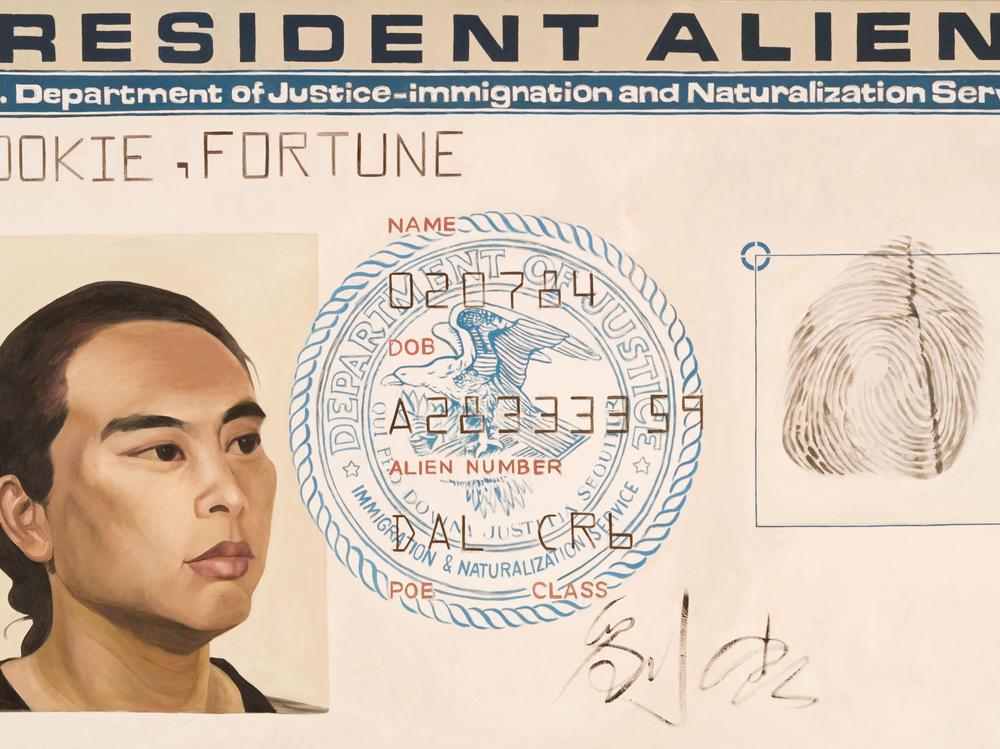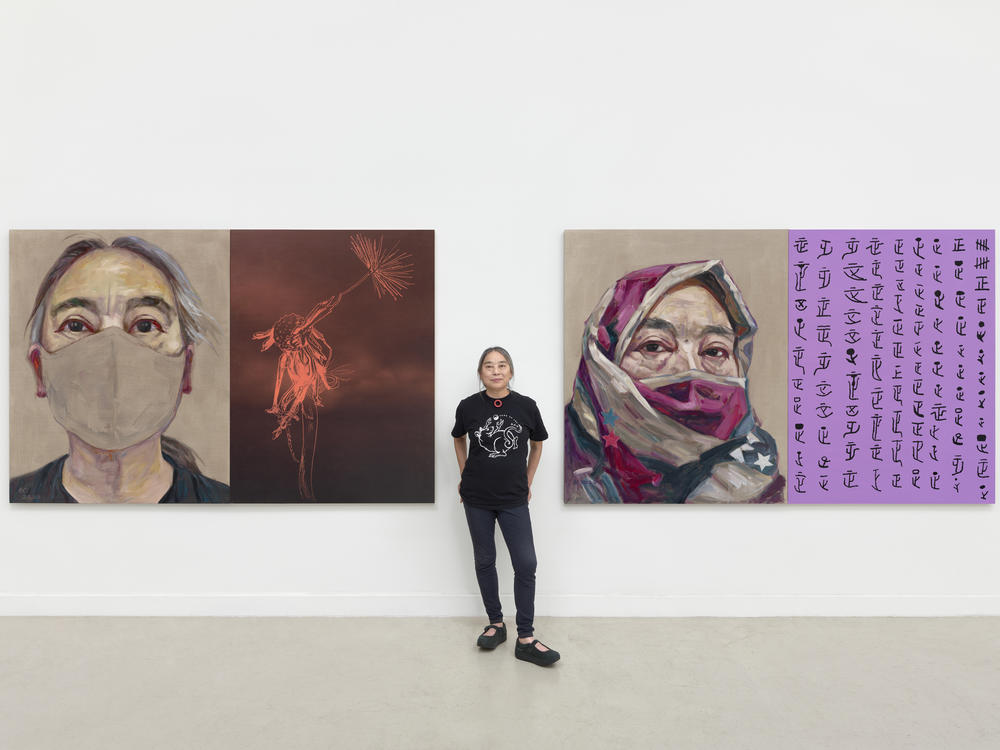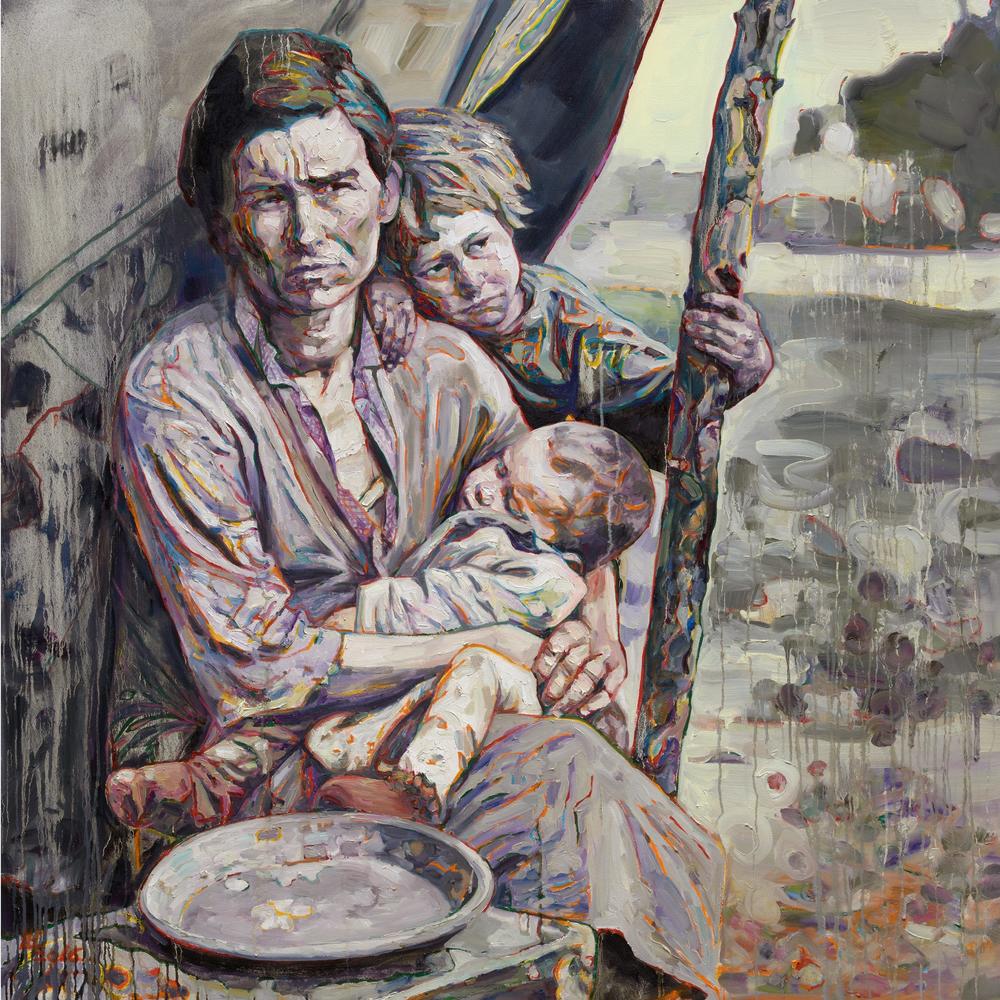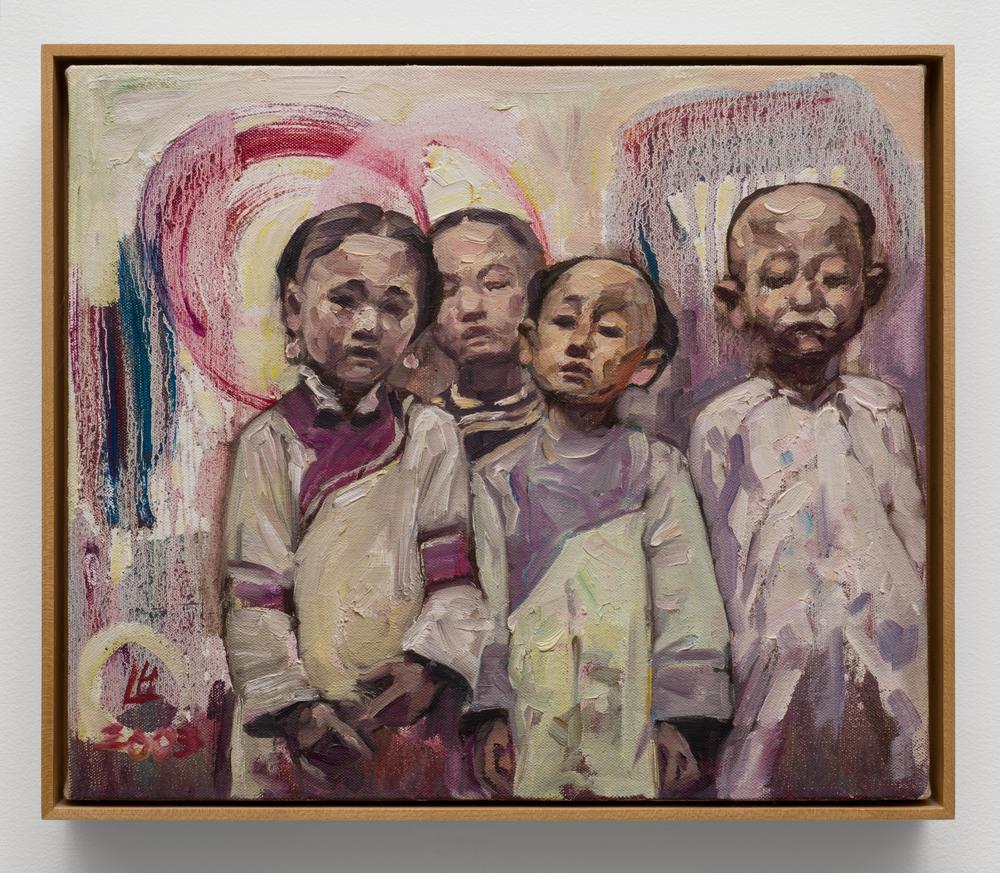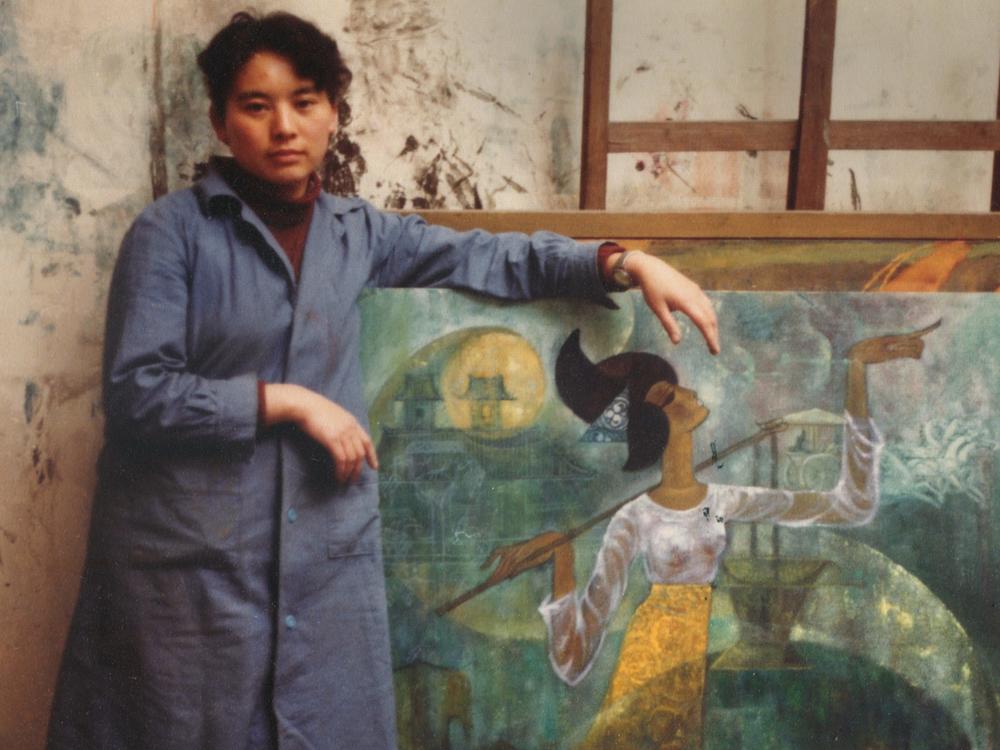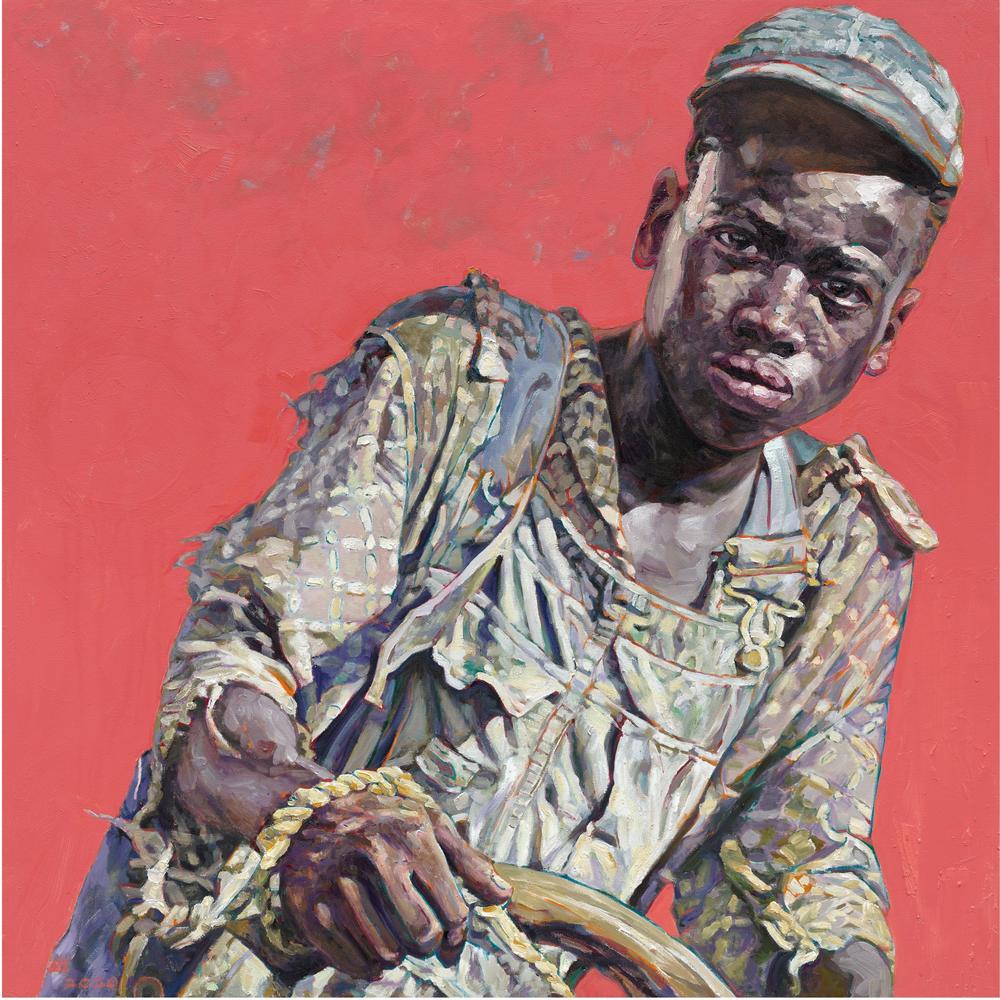GEMA Winter Storm Briefing at 10 AM
Section Branding
Header Content
Remembering Hung Liu, A Portraitist Who Memorialized The Invisible
Primary Content
National Portrait Gallery curator Dorothy Moss and artist Hung Liu got together more than a dozen times over the past few years, often at Liu's studio in Oakland, Cal., to try to figure out what to put in a major retrospective of the artist's work, opening at the museum this Friday.
Liu was 73 when she died earlier this month, only weeks after being diagnosed with late-stage pancreatic cancer. She had a prolific career, punctuated by international shows, and prestigious fellowships and awards, so selecting 50 or so works from the thousands of possibilities was daunting.
"Oh my gosh, how are we going to narrow this down?" Moss asked aloud during one of her meetings with the artist, which she recorded for posterity and shared with NPR. Liu agreed, chuckling: "I know!"
Speaking with NPR from her office recently, Moss said the exhibition that eventually came out of that process, Hung Liu: Portraits of Promised Lands, stands in stark contrast to the museum's countless images of powerful white men.
"The scale is monumental," Moss said. "The colors are searing. The texture is dripping with linseed oil, like a veil of tears. And the faces: there's so much humanity in the faces."
The faces Liu paints are mostly those of Chinese peasants and prostitutes from historical photographs she's taken or collected over the years, and Dust Bowl migrants inspired by Dorothea Lange's Depression Era photographs.
"That is shocking in the National Portrait Gallery, to see that perspective," Moss said. "And therein lies her contribution to the history of portraiture."
In a 2005 KQED video profile, Liu explained how she approaches her subjects. "Somehow you need to make a connection with whatever your subject," she said, as she sketched the outlines of a painting depicting a Chinese peasant on a large canvas. "Because when you have a human figure in any photograph or painting, you always ask, you know, 'who's this?'"
This courageous, quietly revolutionary artist's deep sense of empathy springs from experience. Liu was born in the northeastern city of Changchun in 1948. When she was just a baby, the Communist authorities imprisoned her father, who was a captain in the nationalist army, and continued to dictate the terms of the educated young woman's existence.
In 1968, during the Cultural Revolution, she was sent to work in the fields with other students, as part of a sweeping "reeducation" program. Liu, who had enjoyed painting and drawing since she was little, spent her free moments sketching scenes of country life. But the art she was interested in making – even after she was allowed to resume her studies in Beijing four years later – didn't exactly capture the revolutionary spirit.
"She would paint landscapes in a kind of expressive Impressionist style," said Liu's husband, art critic Jeff Kelley. "And they didn't include heroic peasants. They didn't include the Great Leader. They didn't include signs of industrial or agricultural progress."
Kelley said Liu hid the contraband landscapes under her bed, and dreamed of escape. "She told me that, one time, she was working in the fields, and she saw this silver passenger jet," Kelley said. "And she looked and thought, 'Where is it going? And will I ever be able to go there?'"
After several years of petitioning the Chinese government, in 1984 Liu did manage to board a plane. She headed on scholarship to art school at UC San Diego. There, she studied with the artist Allan Kaprow, best known as the inventor of happenings, an influential performance art form during the 1950s and '60s.
Kelley said the day Kaprow took his class dumpster-diving was a turning point for Liu. "They were standing there with a bunch of paint, and then the professor said, 'OK, do something.' And Hung said, 'Do what?'" Kelley recalled. "That was perhaps the most defining liberating act in her education as an artist—that art could be whatever you insisted that it was."
Liu and Kelley married in 1986; Liu brought her son Ling Chen (LC) from a previous marriage to live with her and Kelley in the U.S. The family settled in Texas, where Kelley had a university job. Liu divided her time between making art and working a series of day jobs: serving as a security guard at the Kimball Museum in Fort Worth, painting labels for soup cans. But she started getting gallery shows around the country, and eventually landed an academic position at the University of North Texas in Denton.
In 1990, Mills College offered Liu a teaching position, and the family moved to the San Francisco Bay Area, where they've lived ever since. (She became professor emeritus of painting at Mills in 2014.) She earned critical acclaim for conceptual artworks exploring the Chinese immigration experience and identity, such as a large-scale, satirical reproduction of her U.S. permanent resident card, Resident Alien (1988), and Jiu Jin Shan ("Old Gold Mountain"), a 1994 installation involving a mound made out of 200,000 fortune cookies.
Today, her works are in the collections of prestigious institutions like the San Francisco Museum of Modern Art, the Whitney Museum of American Art and the Los Angeles County Museum of Art. She made national headlines in 2019 when the Chinese government prevented a big solo show from going ahead at the high-profile UCCA Center for Contemporary Art in Beijing.
With her art, Hung Liu insisted that we see those who might otherwise be invisible. As the first Asian American woman ever to get a solo retrospective at the National Portrait Gallery, Liu elevates other artists of color in a similar way, said her friend and fellow artist Mildred Howard.
"Hung is one of those artists that was breaking those barriers so that people like me can be represented for what we do," Howard said. "She was one of the artists that helped us to get a place at the table."
Now, just as Liu devoted her career to memorializing others, others are doing the same for her. Art institutions on both coasts, such as the de Young Museum in San Francisco and the National Portrait Gallery, are planning memorials in the coming months.
Copyright 2021 NPR. To see more, visit https://www.npr.org.
Bottom Content

